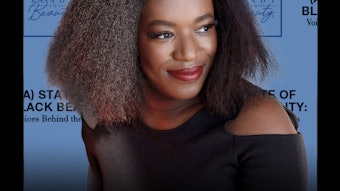
As we make advancements in beauty product development that encompasses our mental and physical wellbeing, the challenge for marketers is maintaining the connection between their brand and the audience. One area to concentrate on is the aesthetic influence of product engagement.
Reaching outside of the scope of current product-to-consumer sensory engagement, there is more going on than just connecting with the five senses. This deeper engagement with product is sometimes unidentifiable. This connection can be emotional or can create a whole new sensation that we, as an industry, haven’t tapped into yet.a
Marketers need to key into that space in order to craft effective brand launches.
Neurological Product Connections
Cross-modal perception occurs when two or more of our sensory modalities, specific to the five senses, cross paths and interact with each other. Examples include synesthesia (ex: perceiving a color when seeing a specific word), sensory substitution and the McGurk effect, in which vision and hearing interact in speech perception.
This cross-modal sensory function creates a whole new experience that we are just on the tipping point of exploring in the beauty industry.
Oxford University has dedicated an entire laboratory to the research of this unique perception, led by experimental psychologist Charles Spence, M.A., Ph.D. The lab studies the integration of information across the various sensory modalities—hearing, vision, touch, taste and smell—using a variety of paradigms and techniques. The University even hosts a Cross Modality Facebook group where they seek out panelists for online tests.
The laboratory’s website states, “This exciting area of research is changing the way we view our senses and contributing important new insights to the understanding of the brain. These insights can have major implications in the real world.”
Embracing Cross-modal Perception
A brand already taking initiative in cross-modal perception is Szent. The company claims to reinvent the flavor experience using the scent of all-natural ingredients, nothing more.
The ring around the neck of an unflavored water bottle is color-coded and naturally scented. The scent of the ring (in combination with the color) creates a perceived taste—even though the water is in fact unflavored—thereby utilizing the cross modalities of sight, smell and taste.
Szent refers to this as retro nasal olfaction, the perception of odors emanating from the oral cavity during eating and drinking, as opposed to orthonasal olfaction, which occurs during sniffing. However, if observed closer, triggered are the sense of seeing the color of the ring, crossing the sense of smelling the natural scent and creating a perceived taste that reveals something “more” going on.
The Mind-skin Experience
A mind-skin approach, called frisson, can be described as an explosive response to the sense of hearing resulting in goosebumps on the skin. Our brain communicates reactive sensations simply by listening to beautiful music.
Recent studies show mental self-stimulation can bring on these skin sensations as wellb. Researchers have discovered that people with a deeper sense of creativity and appreciation of beauty are more likely to experience frissonc. Studies are showing that those with a more creative and exploratory mindset may be more likely to experience this type of music-to-skin responsed.
For the full article, check out Global Cosmetic Industry's May digital magazine.
Footnotes:
aScott Magids, Alan Zorfas and Daniel Leemon, “The New Science of Customer Emotions,” https://hbr.org/2015/11/the-new-science-of-customer-emotions
bwww.sciencealert.com/the-researcher-behind-that-music-chills-study-has-answered-your-questions
cwww.psychologytoday.com/us/blog/the-sensory-revolution/202002/have-you-ever-had-skin-orgasm
dhttps://neurosciencenews.com/music-chills-neuroscience-6167/











